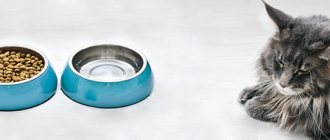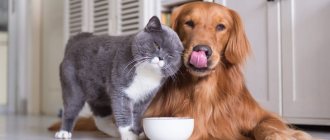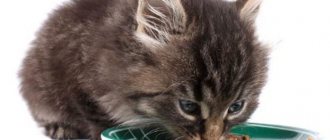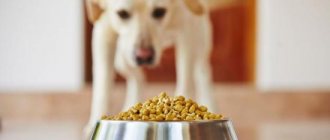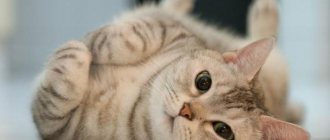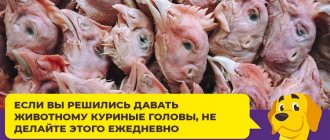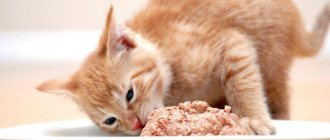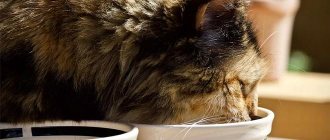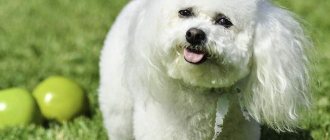People who have recently acquired a furry friend are primarily interested in: what is better to feed a kitten: natural food or food? Which option will allow your pet to stay healthy and live to a ripe old age? Many owners refuse dry food because they believe it is the cause of many cat diseases. On the other hand, natural food can also seriously harm your pet.
What is better to feed a kitten: natural food or food?
You need to make a choice as soon as you take a kitten into your home. This will help maintain the health of the digestive system and avoid problems in the future: it is more difficult for an adult animal to get used to a new type of food, and the body itself may react to such drastic changes with an allergy or other health disorder.
The sooner a choice is made in favor of one of the types of food, the faster the animal’s body will get used to it.
What to feed your cat: dry food or natural food?
If you are taking a purebred kitten from a breeder, it is better to ask him: what kind of diet does the baby’s mother have, what was used as complementary food. If it is dry food, be sure to check the name and manufacturer. Pedigree cats have a more sensitive digestive system, so it is better to stick to the diet offered by the breeder. But if the kitten is accustomed to dry food, keep in mind that you need to buy high-quality and often expensive food.
Information about the nutritional style of the kitten’s mother will allow you to choose the right diet for him.
Kittens from the street are less picky and not picky about food. But, since in the first weeks of life the animal ate whatever it had to, it has a serious deficiency of minerals, vitamins, and amino acids. Therefore, nutrition must compensate for this deficiency in order to keep the animal healthy and active.
The diet of selected kittens should compensate for the lack of nutrients in their body
Important! The most correct option for creating a diet is to show the kitten to a veterinarian, conduct a comprehensive examination, and make a decision based on it.
If you look at the comments to the article “Natural food or dry food?”, you will notice that:
- Many adherents of natural food do not know the basic rules of feeding a pet;
- Not everyone is ready to spend time preparing a separate menu for a cat, and also to use meat fillet for this, and not trimmings and offal;
- Fears of using dry food are in most cases unfounded and only apply to cheap food;
- Veterinarians recommend feeding cats industrial, but high-quality food;
- Often, owners sin by mixing several food options, which leads to health problems for their pet.
Some people support exclusively natural nutrition due to their incompetence
Mixed feeding – harm or benefit?
Some owners who cannot decide on a diet choose the path of least resistance - they switch their pet to a mixed diet. A mixed diet involves simultaneously eating industrial and natural food.
Since no official research has been conducted on this issue, veterinarians can only “press with authority” and present obvious arguments.
digestion process consists of several stages.
- Primary processing of food occurs in the mouth, when saliva hits the food.
- Next, food moves through the digestive tract and enters the stomach, where it is processed by acid-containing juices. At this stage, the food is ready for digestion...yes, many people do not know that food is digested not in the stomach, but in the intestines.
- Having moved into the intestines, food undergoes a process called fermentation and digestion. All useful substances contained in food are “pulled out” in the intestines, where they are “absorbed” into the walls of the mucous membranes and are carried throughout the body through the bloodstream.
Natural food stays in the cat’s stomach for 1–2 hours, after which the intestines are able to digest it. Industrial food, if we are talking about dry granules, remains in the stomach for 2 or more hours. The fact is that the cat's intestines will not be able to digest solid granules, so they absorb liquid in the stomach until they turn into a mushy mass.
Another nuance that adherents of mixed nutrition do not take into account is the so-called addiction effect. The cat's body adapts to work in a certain way and spend the usual amount of time digesting food. This period of time will affect the cat’s hunger and overall well-being.
If you give your pet natural food in the morning and dry food in the evening, most likely neither of the other treats will be fully digested. The same applies to mixed nutrition, when there is both natural food and food pellets in one bowl.
You can soften the “effect” of mixed feeding by soaking dry food in water 10–15 minutes before serving. However, veterinarians constantly draw attention to the fact that any mixed feeding sooner or later leads to disturbances in the digestive process.
If you feed your pet dry and natural food at the same time, he is likely to develop dysbiosis.
Mixed feeding is acceptable only during the transition of a cat from one type of diet to another. For example, if your cat has always eaten dry food, and you decide to feed it natural food. The transition to a new type of diet is made through partial replacement. The total transition period should not take more than 10–14 days.
Dry cat food: features, types, reviews
When dry food first appeared on the domestic market, many veterinarians did not advise buying them. The products were made from cheap and low-quality raw materials, with the addition of taste and smell enhancers. Such foods actually led to liver and kidney diseases. No one thought seriously about the composition and proportions of the ingredients. Therefore, many still believe that this dietary option is harmful.
Prejudices regarding the harmfulness of dry food come from the negative Soviet past
Now technology has become more advanced, and many manufacturers have begun to produce high-quality products approved by veterinarians. Modern foods are not only healthy, but also help in the prevention of urolithiasis, obesity, and hormonal problems. There are also lines of special medicinal products. Therefore, today veterinarians advise feeding your cat dry industrial food, but provided that this food is selected correctly and consists of truly healthy and safe ingredients.
These days the dry food market is developing rapidly, finding a good option is not a problem
High-quality dry food has a balanced formula and contains all the nutrients in the required amount. Most well-known brands develop their formulations based on recommendations from veterinarians. The recommended proportions and composition of healthy products are taken as a basis.
Dry food is complete. That is, eating only it, the cat does not require additional vitamin supplements or other foods in the diet. But this rule applies to quality options.
Classification of dry cat food
There are several groups of feeds that differ in composition and price. Often you can find several lines from the same manufacturer - under the same or different brands.
Table 2. Categories of feed and their features
| Feed group | Peculiarities |
Economy | The cheapest and least desirable option. They have little meat, a lot of grains. Moreover, both of them are of low quality. There are many flavors that cause addiction and overeating. It is this group of foods that can provoke urolithiasis in cats. |
Premium | The most numerous group. The food is affordable for most owners and contains the optimal combination of components. Medium to good quality ingredients. These foods provide your pet's body with the necessary components, but will not help prevent possible health problems. Often not suitable for purebred dogs prone to allergies. |
Super premium | They cost even more, but for any cat this is an ideal option: tasty, satisfying, healthy. There are many specialized preventative foods in this group. They are suitable for purebred animals and animals with various diseases, for young and old. |
Holistic | Made from the highest quality raw materials, hypoallergenic. They are maximally absorbed and help get rid of certain diseases and conditions. The only negative is that they cost several times more than economy and even premium ones. |
Cons of dry food
If we consider high-quality food, then there are few disadvantages in it. For the owner, this is primarily a question of price: a good diet is expensive. The second disadvantage is that it is difficult for an ordinary person to understand the composition and choose the optimal one.
For cats, as for people, sometimes the smell of flavorings overshadows the harmfulness of the food
Some cats completely refuse to eat dry food, especially if it does not contain flavoring additives. Moreover, even changing the manufacturer does not help.
Cats are extremely picky when it comes to water.
The biggest disadvantage for your pet’s health is that dry food needs to be washed down with plenty of water. This is where many animals have problems: some don’t like water in principle, others prefer only running water, and flatly refuse to drink from a bowl. Since forcefully pouring water into a pet is harmful to both health and psyche, in this case it is better to abandon dry in favor of canned or natural water.
Pros of dry food
The main advantage for the owner is the minimum time for feeding. No need to cook, defrost or reheat. It takes a few seconds to fill the bowl with “drying”.
Important! When feeding dry food, stick to the dosage, do not increase it and do not pour it “by eye” or in excess. This will quickly lead to obesity.
Additional benefits of this diet:
- Do not require additional vitamin supplements;
- They prevent many diseases;
- Provide a full range of useful components;
- Allows you to accurately dose calorie content;
- They provide optimal load on teeth and gums and help clean them (unlike canned and natural products).
What components does dry food contain?
The dry product contains the same products that are suitable for natural nutrition. But they undergo additional processing and are dried. This technology can significantly increase shelf life. If fresh meat puree with vegetables and an additive in the form of yeast is suitable for feeding for several hours, and can be stored in the refrigerator for several days, the shelf life of “drying” is several months. This is convenient to buy with a supply of several weeks.
The main component of the feed is meat, processed and dried. In high-quality food there is at least 65% of it. This is the minimum required for a healthy cat diet. The remaining ingredients are presented in the table below.
Table 3. Feed components, their proportions and effects
| Component | Quantity | Action |
| Meat | 2/3 – pure meat, without fat and veins | The main source of protein, microelements, vitamins |
| By-products | Maximum 10% | Source of vitamins, biotin |
| Fat | Cheap feeds often use lard and trimmings | Strengthens the immune system and improves digestion |
| Cereals | Their norm is no more than 5% of the total amount of meat | Source of fiber, stimulate peristalsis. Large quantities are not absorbed by the cat's body. |
| Vegetables | — | Necessary for digestion, a source of vitamins and minerals. |
| Taurine | 1000 mg of substance per 1 kg of dry food | Strengthens and supports muscle tissue, especially the heart. Preserves vision |
| Vitamins and minerals | — | Supplement the main diet |
The exact proportion depends on the purpose of the feed. For example, food for the prevention of urolithiasis, diseases of the digestive system, for cats with a tendency to allergies differ in the origin and proportion of ingredients.
How do foods from different manufacturers differ?
Each company produces a product according to its own recipe and technology. Even if you look at food of the same class and approximately the same price category, but from different manufacturers, the composition can be completely different.
When changing dry food, it is advisable to consult a veterinarian
They use different types of meat, different vegetables and additives, even if the proportions of these components are approximately the same. Therefore, when switching from one food to another, if there is hypersensitivity, the animal may experience an allergic reaction.
How to choose high-quality dry food?
The first thing you should pay attention to is the class and composition of the feed. You need to look not only at the percentage of meat ingredients, but also their nature. If the product contains about 70% “meat ingredients”, of which less than 5 are pure meat or none at all, the food is not of very high quality.
Feed class is an indicator of the amount of meat it contains
The remaining components are no less important. A large amount of corn and soybeans will not benefit the animal, especially if such a product is fed constantly. The advantage will be vegetables and beet tops. Also an essential ingredient is taurine, which is necessary to support vision and muscles.
If you look at the price, you should immediately discard the most budget options: you will still spend the amount saved on visits to the veterinarian due to emerging diseases. Therefore, it is better to immediately choose food of at least the average price category, and for purebred animals - expensive ones.
Purebred cats, due to their susceptibility to allergies, should eat super-premium food
Do not buy several kilograms of your chosen dry food at once: it is not known how your cat’s digestive system will react to it. Take a little - 200-300 grams. And observe your pet’s condition after feeding for several hours, or better yet, days. If your pet becomes lethargic, a rash appears, hair begins to fall out, or serious changes in stool occur, this food should be discarded. But this is not a reason to completely exclude the option of feeding dry food: try a product from a different brand: perhaps it will suit your cat.
Rating of dry cat food
There is no universal food that would suit absolutely all cats, since the diet must be selected depending on weight, breed, activity level, and the presence or absence of diseases. There are many manufacturers, and not all of them strictly follow the recipe. Serious and self-respecting companies must develop menus in collaboration with veterinarians and regularly conduct research and testing of their products.
Another sign of the premium segment is a developed system of lines for cats with different digestive characteristics.
In each class there are several brands that are as versatile as possible and will suit most animals.
Premium class:
- Brit Premium - contains about 40% meat and rice is healthier than corn;
- Organix – the line includes complementary dry and canned food;
- Probalance – contains a balanced vitamin and mineral complex;
- Ontario – maximum animal, minimum plant protein;
- Science Plan - a large selection of flavors and lines.
Brit Premium food is famous for its natural preservatives and relatively budget price
The best in the super-premium class:
- Fitmin for Life – hypoallergenic, based on meat and rice;
- Brit Care - distributed almost everywhere, contains enough meat and a minimum of ash;
- Summit contains natural antioxidants and no artificial flavors;
- Blitz – affordable price with excellent composition;
- Leonardo has enough vitamin E and other useful components. There is a large packaging of 15 kg.
Blitz brand food contains dried apples, probiotics and yeast
Among holistic foods, the top five include:
- Acana – contains maximum meat, does not contain grains;
- Carnilove – hypoallergenic, contains 2/3 meat ground into flour;
- Go Natural – contains natural flavors and preservatives, as well as increased amounts of vitamin E;
- Grandorf – source of antioxidants and protein;
- Farmina N&B – there are grain and grain-free options.
Feed Go! Natural is full of a variety of supplements designed to improve your pet's health
Economy-class industrial feed: nuances worth knowing
To produce cheap feed, they use the most expensive ingredients, and more often food waste. There is absolutely no meat in them, the maximum is sinews, fat and offal. Therefore, the benefit of them is very doubtful.
Economy class foods are high-calorie dummies that only formally saturate the cat.
The main filler is a large amount of corn or cheap cereals, as well as vegetable peelings. This food is quite filling and high in calories, but these are empty calories. Often, regular eating like this leads to weight gain and disturbances in the digestive system. In terms of their effect on the body, they can be compared to fast food and instant noodles: if you eat them constantly, you will quickly need medical attention.
Due to the inability to control the amount of food eaten, the economy line leads to rapid weight gain for the pet.
Another disadvantage: cheap food contains a lot of taste and smell enhancers, so-called attractants, in order to cause an increased appetite in the animal and a desire to eat such food. Therefore, the cat can easily overeat. And over time, these substances become addictive. This is not just a habit, but a real addiction - this is what alcohol, tobacco, and drugs cause in a person.
Natural food for cats
So, option one, feeding with natural food . The basis of a natural diet should be meat. Meat can be given either boiled or raw (it is recommended to scald it with boiling water beforehand). It is possible to give your cat meat by-products, but bones are extremely undesirable, since they can injure the digestive tract.
You should not give your cat liver or fatty meat. Contrary to popular belief, fish is not the best food for a cat. It is recommended to include it in the diet infrequently (1-2 times a week), and boiled is best. Sea fish will be preferable to river fish, because... river water is more likely to contain parasites. Fish, like meat, should be lean. The animal can also be given rice and buckwheat porridge; it is worth offering carrots, zucchini, cabbage and cucumbers. Not every cat will like vegetables, but it's still worth a try. You should not give her potatoes or sweet fruits. A couple of times a week you can include a boiled chicken egg or several quail eggs in your diet. Fermented milk products that fit well into a cat's daily diet include kefir, natural yogurt without flavoring, low-fat cottage cheese, low-fat sour cream, fermented baked milk. Milk should not be given under any circumstances - it is not digestible! Remember that milk is food for the young, and for the young of a certain species. An adult cat's body does not have the enzymes necessary to digest milk (just like many adult humans). Also choose a good vitamin and mineral supplement for your cat. It is very important that she receives a sufficient amount of taurine, because the cat’s body completely obtains it from food, because unable to produce independently. Clean water should always be freely available. And finally, it should be noted that since a cat is a predator, the bulk of the proteins, fats and carbohydrates that it receives from food should be of animal origin. No porridge or vegetables can replace meat for her.
Canned industrial feed
Canned food is prepared from the same ingredients as dry food. The only difference is that it contains much less liquid. Therefore, do not be surprised that a cat that eats canned food does not drink water: this is normal.
There are two types of canned food:
- Complete ones contain the entire range of useful components and a minimum of aromatic additives. They are suitable for everyday nutrition. If you adhere to the dosage recommended by the manufacturer, the cat will receive the required amount of amino acids and vitamins, and maintain its weight and normal activity schedule;
- Delicacies, or delicacies. Their nutritional value is minimal, the main emphasis is on “pampering” the sense of smell and taste buds. Not suitable for continuous use, can be given no more than 2-3 times a month.
The best food for cats does not aim to smell delicious; their main task is to provide the cat’s body with all the necessary substances.
Important: Canned food in open packaging can quickly spoil, despite the content of preservative additives. Therefore, either buy portioned bags and jars (it costs more, but not much), or store the leftovers in the refrigerator (no more than 1-2 days). But warm it up a little before feeding.
If a cat is addicted to canned food, the owner must take full care of his teeth.
Cats are rarely fed canned food alone, usually during the recovery period after surgery or illness, including dental disease, when it is necessary to reduce the load on the gums and digestive system. Canned food has two significant disadvantages: it does not provide the necessary stress on the teeth of a healthy cat, and it takes a heavy toll on the owner’s wallet.
As a conclusion, I will cite several common prejudices regarding the cat’s diet.
LiveInternetLiveInternet
Resurrected
all posts by the author Having got a cat, not everyone seriously thinks about how to feed it properly.
If the animal is purebred and purchased from a nursery, the breeder will tell the new owner what to feed the kitten. The average purr gets the same thing that its owners eat: soup, porridge, sausage. Remembering pictures in children's books, where a cat is most often depicted next to a saucer of milk or eating fish by both cheeks, many feed the cat these very foods. It’s good if the animal’s health is strong enough to withstand this. And if not? Unfortunately, most cat owners think about proper nutrition for their pets only after they become seriously ill and have to go to a veterinary clinic, where, of course, everything will be explained to them.
But won’t it be too late, because lost health cannot be restored? If we truly love our pets, we need to feed them right from the very beginning of their life in our home. Despite the fact that cats have been living side by side with humans for thousands of years, they, unlike dogs, did not become omnivores, but remained predatory animals. When choosing a diet for a cat, this must be taken into account. Cats in nature feed on small rodents, eating them whole, along with their fur, stomach and its contents. If you roughly calculate the percentage of a diet similar to the natural one, you get 90% meat and 10% plant foods - grains, grass, vegetables. In addition, the cat needs vitamins, which in nature it receives from natural food, and in a home diet - in tablets and powders. Based on this, you can choose two feeding methods: natural food and ready-made industrial feed. Let's take a closer look at each of these methods.
Natural nutrition
Natural food , if properly balanced, is the most beneficial option for a cat. You'll have to forget about food from the master's table and cook for the cat separately. Most adherents of natural nutrition buy ingredients for a week or two at once, make a mixture of finely chopped or minced components and freeze them in small portions, which are thawed and fed to the cat if necessary. Usually these are several types of meat (beef, chicken, rabbit, lamb), quail eggs, some cereals and vegetables, as well as vitamin and mineral supplements in powders. Instead of making a mixture, you can feed your cat a variety of foods that suit her. They are given both raw and boiled. Any meat that is fed raw must be frozen for 3-4 days in the freezer of the refrigerator, and after defrosting, scalded with boiling water. Cereals and vegetables will have to be boiled and mixed with meat, without which the cat will simply refuse to eat them.
It is important to remember foods that should be completely excluded when feeding cats. Pork is absolutely contraindicated for cats - firstly, when feeding raw pork there is a high risk of infection with helminths, and secondly, it is too fatty for a cat. Raw fish is also excluded due to the same danger of helminths, and also due to the fact that the enzymes contained in raw fish destroy vitamin B1, which is extremely important for cats. In addition, fish upsets the balance of calcium and phosphorus in the cat’s body, which is very dangerous and is one of the main causes of urolithiasis. And what’s also important is that the fish contains bones, and even the most attentive owner may miss a few when removing them. They can seriously injure the animal's gastrointestinal tract. A healthy cat without a predisposition to urolithiasis can be given a little boiled sea fish (good quality, not pollock or hake) no more than once a week. As for cereals, you should avoid legumes, millet and oatmeal. You should not give your cat raw chicken eggs; it is better to boil them or give them quail eggs. In any case, they should not be given very often. By-products, especially liver, should be given very limitedly. Raw liver can cause diarrhea in a cat, so if you do give it, then only boil it (and it is important not to overcook it, as this can cause the opposite problem). It is not at all necessary to give milk to a cat; moreover, many adult cats cannot tolerate milk, since their stomach does not digest it. But fermented milk products, if the cat agrees to them, can be added to the diet. It can be cottage cheese, kefir, low-fat sour cream. Do not forget also about vitamin and mineral supplements.
Natural food has a lot of advantages for a cat’s health, but, unfortunately, a lot of disadvantages for its owner: you need to spend a lot of time feeding your pet in a balanced manner, preparing mixtures or individual products. Products must be exclusively fresh so as not to cause gastrointestinal disorders in the animal. It is unacceptable to leave them in a bowl for more than half an hour, otherwise they will spoil. If your cat suddenly develops an allergy to one of the food components, you will have to eliminate them from the diet sequentially to find out which of them caused the allergy. During this time, the animal can be seriously harmed. In addition, cats often turn out to be picky and flatly refuse to eat what their owner offers them. In addition, natural food, if you buy really high-quality products for the animal, is a more expensive method of feeding than ready-made industrial diets, and this is important for owners of several animals.
Dry food
Now that there is a choice, many cat owners, including large catteries, have switched their animals to ready-made dry food . However, it is necessary to distinguish between truly high-quality food and those that will not bring any benefit to the cat, only harm. Good food cannot be cheap, because only high-quality ingredients are used to make it. Keeping up with technology also requires financial costs.
Which food to choose? Premium food is not usually sold in supermarkets and can only be found in pet stores. Professional food is never advertised on TV - advertising is aimed at a narrow target audience and is placed in magazines for animal lovers, in pet stores and at cat shows. Another sign that will not allow you to make a mistake is that premium food is always available not only in small, but also in large bags, because the main consumers of such food are not small buyers, but owners of large nurseries, for whom it is not profitable to buy small bags. Therefore, these feeds are packaged in bags of 10 and 15 or more kg. It is unlikely that you will find food, advertising of which is actively replicated on TV, in packaging of more than 2 kg, and this is rare: they are usually packaged in bags of 200-400 g.
The price difference between premium and economy-class food is usually quite large. But remember that low-quality food contains cheap sources of protein that are poorly absorbed by the animal’s body (often even bones and feathers), and in order to be satisfied with such food, the cat needs to eat much more of it. Therefore, the difference in price is leveled out by the dosage. Widely advertised foods contain attractants - substances that attract the animal, so after trying this food, the cat will no longer want to switch to another.
Among professional foods, it is also not easy to choose exactly the one that suits your cat. Feeding is an individual process, and you may have to change several foods before you choose the right one. Premium foods that you should choose if you really care about your pet's health include: Royal Canin , Purina Pro Plan , Hill's , Innova , Chicken Soup , Nutro Choice , Yams . Of course, this is not a complete list, but only the most popular food brands in Russia among professional breeders.
Dry food can be combined with canned food for cats, preferably from the same manufacturer. You can also supplement dry food with natural food, but dry food and natural products should not be given at the same time, but in different doses.
Remember that a cat that eats mainly dry food must drink enough water, so fresh, clean water should always be freely available to the animal. Whether to leave dry food freely available is up to you. If your pet is overweight or prone to overeating, this should not be done.
New food should be introduced gradually, first replacing 1/10 of the usual diet with a new one, and then every day adding more and more new food and removing the old one. Cats are very conservative animals, and they may not like new food. Therefore, it is not worth buying a large volume of new food at once; it is better to limit yourself to a 300-400 gram bag to begin with.
And also, choose food that you can be confident in the reliability of supply. This is very important in small towns where only one pet store can sell any particular food. But big cities are not immune to supply disruptions. For example, now, due to changes in legislation, difficulties have arisen with the supply of food from the USA, and these are several types of premium food that the cats of many large nurseries fed. Choose an option that will be available to you at any time.
With any feeding method, do not forget to sprout oats or wheat for your pet so that he always has fresh grass at his disposal. It helps the cat cleanse the stomach of fur that accumulates there and is rich in vitamins.
If you have questions about this article, we will be happy to answer them in the comments.
Good health to your pets!
© www.kotostudio.ru/food/cat-food.html
Choice of food: natural or special?
Let's proceed from the fact that a cat is initially still a wild and predatory animal. Cats catch mice and other small rodents and eat them whole, in rare cases leaving the skin behind. Thus, the cat receives both meat and eats together with the rodent what he feasted on. Grains, roots, invertebrates. So the wild cat gets a balanced food, rich not only in meat, but also in grains.
Therefore, a cat cannot be fed only meat or only dairy products; it is necessary to combine one with the other and add vitamins. And don’t forbid your cat from catching mice, it will only benefit her, of course, if the mice are not contagious with any disease.
The next question that haunts many is whether to feed your pet dry food or natural food. Here, you probably need to understand whether you can constantly eat semi-finished products, chips, and generally dry food, albeit rich in various additives. It is unlikely that any of us would recognize such a diet as healthy. The same can be said about dry cat food. It is, of course, enriched with special vitamins, has a pleasant crunch on the teeth, and the pet eats it with pleasure, but very soon, because of this food, the cat will completely refuse regular food, what nature pampers us with.
About natural feeding
If you decide that you will feed your cat only natural food, do not forget about meat. The cat needs it for the proper functioning of the heart and, in general, for tone. During pregnancy, meat is also necessary for the expectant mother.
When feeding your cat, alternate between different cereals and broths, just remember that the dishes prepared for the cat should not be spicy, very salty or hot. Therefore, you should avoid feeding sausages and other seasoned meat delicacies. Milk for cats is also not the best option, leave it for kittens. An adult cat usually cannot digest milk, so diarrhea often occurs. It is better to give her water and fermented milk products to diversify her diet.
A recipe for a simple and inexpensive food for domestic cats made from cottage cheese and carrot by-products.
The issue of choosing dry or natural food is controversial. Some experts talk about the undoubted advantages of ready-made food: healthy, tasty, convenient. Others refute their claims about taste and benefits. In any case, your kitten is under your care, so he will eat what you give him. We advise you to contact a veterinarian who will help you make the right decision.
How to choose quality dry food
Dry food has its own gradation. Conventionally, dry food can be divided into: economy class, premium class and holistic. All economy class food has the cheapest price and is made from ground bones with the addition of artificial preservatives that enhance taste and color. We can say that there is no meat in them at all. Such food is very harmful to the animal’s body, therefore, due attention should not be given to such food.
Premium food is necessarily characterized by the presence of natural meat and the absence of harmful, artificial preservatives. They are manufactured in such a way as to maximally balance the composition of the feed for the needs of the animal. Since there are dozens of types of food on the market, we will list a few that are widely known for their high quality: Royal Canin, Proplan, Purina, Nutra and others.
Holistic - such foods have a completely natural, well-balanced composition. They do not contain components that can cause allergies or other problems. Such feeds must contain: vitamins, minerals, proteins, and grains. Feeding an animal only with such food will be much more expensive than feeding it with natural products.
Ready-made food: diet and nuances
It is worth buying industrial food only of good quality. This is premium, luxury, holistic food. A cheap product will have a detrimental effect on the health of the animal; it is made from low-quality products.
The diet depends on the age and mobility of the pet. An adult cat is fed 2 times a day, morning and evening. If a pet leads a calm lifestyle, 40-60 g of dry food is enough for him; for active animals, a single meal reaches 80 g.
Be sure to read:
Can cats have sweets: when is it necessary, in what form is it allowed, benefits and harms, why not?
Kittens are fed 3-4 times a day in small portions. Additionally, boiled milk is added.
Dry food
Dry foods include:
- meat;
- vegetables;
- cereals;
- offal;
- necessary nutrients.
Croquettes are prepared from the mixture, adhering to the temperature regime. Dry food does not contain moisture; the animal must have clean boiled water.
Dry food is chosen by breeders who are forced to leave their pet alone unattended. Such food will not spoil quickly, and the animal will not starve. The benefits of food include cleaning the mouth. Croquettes help clean teeth and prevent plaque.
If the animal cannot chew dry food thoroughly, it is soaked in water.
Inexpensive food contains ground bones, feathers or intestines, so such food contributes to the development of urolithiasis, causes an allergic reaction, kidney and liver diseases.
Norm of dry food per day
Dry food is chosen by breeders who are forced to leave their pet alone unattended.
The amount of food is calculated based on the weight of the pet.
Daily food intake for an adult cat:
- body weight up to 3-4 kg – 40-60 g;
- body weight 5 kg – 60-80 g;
- body weight from 5 kg - calculated proportionally: 10-12 g of feed per 1 kg.
For kittens:
- weight less than 2 kg – 40 g;
- weight 2-3 kg – 50-55 g.
For older cats, the daily allowance is slightly reduced. Pregnant cats are given 60-70 g of dry product per day.
In case of illness, the daily dose is prescribed by the veterinarian. A castrated animal is fed 3 times a day in small portions, as they are prone to gaining excess weight.
How much wet food do you need per day?
The label indicates the manufacturer's recommendations on how much food to give to your pet. Depending on the company, the quantity of the product may vary slightly.
If the manufacturer does not indicate the daily norm, you should calculate it yourself:
- body weight less than 2 kg – 120-150 g;
- weight from 3 to 5 kg – 200-250 g.
The daily intake of wet food should not exceed 7% of the animal’s total body weight.
An adult pet should be fed twice a day - morning and evening, dividing the daily amount of canned food equally. The interval between meals does not exceed 9 hours.
Be sure to read:
How to feed a cat if he doesn’t eat, what to feed a sick cat
Flaws
Wet food is a balanced diet for your pet.
But the breeder should pay attention to a number of disadvantages of such nutrition:
- High price. Wet food costs much more than dry food. If breeders have several pets, the purchase of food will affect the family budget.
- Quick spoilage. The product quickly becomes weathered; the cat may refuse to eat canned food if it has been in the bowl for a long time and has dried out.
When choosing a product, you should carefully study the packaging. High-quality food is marked as complete food. If this is not the case, the product is made from low-quality ingredients and is not suitable for the animal.
